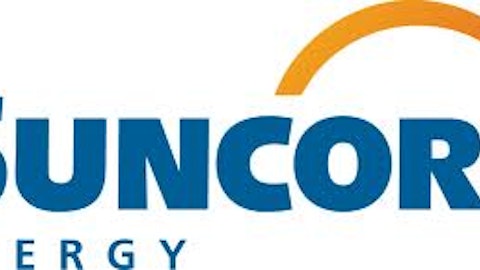Investors and shareholders often times make big mistakes when trying to assess the true value of a company. And many times these errors of judgement turn out to be very common ones when looking at a company. Investors can lose a lot of money if they keep on measuring the value of a company in the wrong manner. Three such common valuation misconceptions are listed below. And some of them even incorporates the wisdom of the evergreen CEO of Berkshire Hathaway Inc. (NYSE:BRK.B).
1. Shorting high-growth scalable businesses
Short-selling is rarely a good idea, primarily because of the risk-return profile. However, short-selling can be a great tool for profiting when the investment thesis on a stock is very compelling. Numerous short-sellers tend to focus on currently unprofitable firms to make a quick buck without looking at the company’s business strategy.
Often times, rapidly growing firms like Amazon.com, Inc. (NASDAQ:AMZN) and Yelp Inc (NYSE:YELP) are sold short because the firms are not positive in the bottom line. But just because these firms haven’t been profitable for the last twelve months doesn’t mean they will not turn out healthy profit margins in the future. Both of these firms have a large installed customer base that frequent their platforms for getting information about products and services.
Amazon.com, Inc. (NASDAQ:AMZN) now has in excess of 200 million customers, and a large number of those shoppers frequent Amazon.com, Inc. (NASDAQ:AMZN)’s platform for their shopping needs, thanks to offers like Amazon Prime. Meanwhile, Yelp Inc (NYSE:YELP) is growing at a rapid pace–the company’s top line grew 68% in the last quarter. The growing review and search site had only 66 million users in 2011, which grew to more than 102.1 million monthly users at the end of 1Q13. In addition, Yelp Inc (NYSE:YELP) gets more than 45% of its total user searches on mobile apps.
Both firms operate in a business that can scale pretty rapidly and translate into solid revenue growth, user growth, subsequently improved margins and free cash flow. Short-selling firms that can achieve critical mass and ubiquity in a short time-frame can lead to disastrous losses.
2. Investing based solely on P/E
The Price/Earnings ratio is the one of the most quoted, well understood and widely used measures of assessing a value of a company. And if a stock is valued based solely on the P/E of its last twelve months, an investor can potentially make a very big error, leading to sizable losses. The market is irrational, no doubt, but usually the market is pretty good at pricing stocks. A company operating in a high growth e-commerce segment in China, Brazil or Russia will deserve high P/E ratios, for instance.
And on the flipside a newspaper or a furniture manufacturer will trade at single digit multiples, because there is very limited growth in those sectors. And some investors value a company based on Forward P/E’s alone, which is based upon next year’s projected earnings. However, often times the earnings that are projected out for next year are off by a big mark, which leads to a very wrong conclusion and an incorrect forward P/E.
The value of a company is the present value of its free cash flows discounted at an appropriate rate to factor in the risks inherent in that company. Another prudent step is to assess the company’s forward looking strategies and its competitive advantage, if any. Investing in a company based on a low P/E multiple alone can lead to a very incorrect assessment of a firm.
3. Valuing financials based on P/B only
Warren Buffett has implemented a share repurchase policy in his company, which allows the company to buy-back stock of Berkshire Hathaway Inc. (NYSE:BRK.B) at no more than 120% of book value. However, that doesn’t mean that Buffett uses the P/B ratio to value financial names.
Financial stocks are usually valued by investors and analysts with the Price/Book ratio, or a more prudent approach–the Price-to-Tangible Book ratio. However, the Oracle of Omaha gave out his methodology of valuing banks in a recent interview with CNBC. Buffett’s chosen method of valuing banks is return on assets and earnings power, and not book value.
His preferred method of valuing banks is Return on Assets (ROA), and he stated that banks that earn 1.3% or 1.4% will end up selling above their tangible book value. As the earnings flow through to book value over time, banks that earn decent returns will do well and sell above book value.
Buffett’s favorite bank Wells Fargo & Co (NYSE:WFC) has a ROA of more than 1.46%, and the conservatively run bank trades at a much higher P/B multiple of 1.47, compared to peers. Whereas, Bank of America Corp (NYSE:BAC) earns a much lower ROA of only 0.23%, and as a result it is trading well below book value. Bank of America has a current P/B of only 0.64, which is widely expected to go north, as the company is still unwinding its troubled mortgage assets.
The Takeaway
Valuing a company solely based on book value or a P/E multiple is not the most correct or accurate approach. A company’s earnings capabilities and competitive positioning should be assessed as well in order to develop a big picture view.
Ishfaque Faruk has no position in any stocks mentioned. The Motley Fool recommends Amazon.com, Bank of America, Berkshire Hathaway, and Wells Fargo (NYSE:WFC). The Motley Fool owns shares of Amazon.com, Bank of America, Berkshire Hathaway, and Wells Fargo.
The article Great Ways To Lose Good Money originally appeared on Fool.com and is written by Ishfaque Faruk.
Ishfaque is a member of The Motley Fool Blog Network — entries represent the personal opinion of the blogger and are not formally edited.
Copyright © 1995 – 2013 The Motley Fool, LLC. All rights reserved. The Motley Fool has a disclosure policy.






